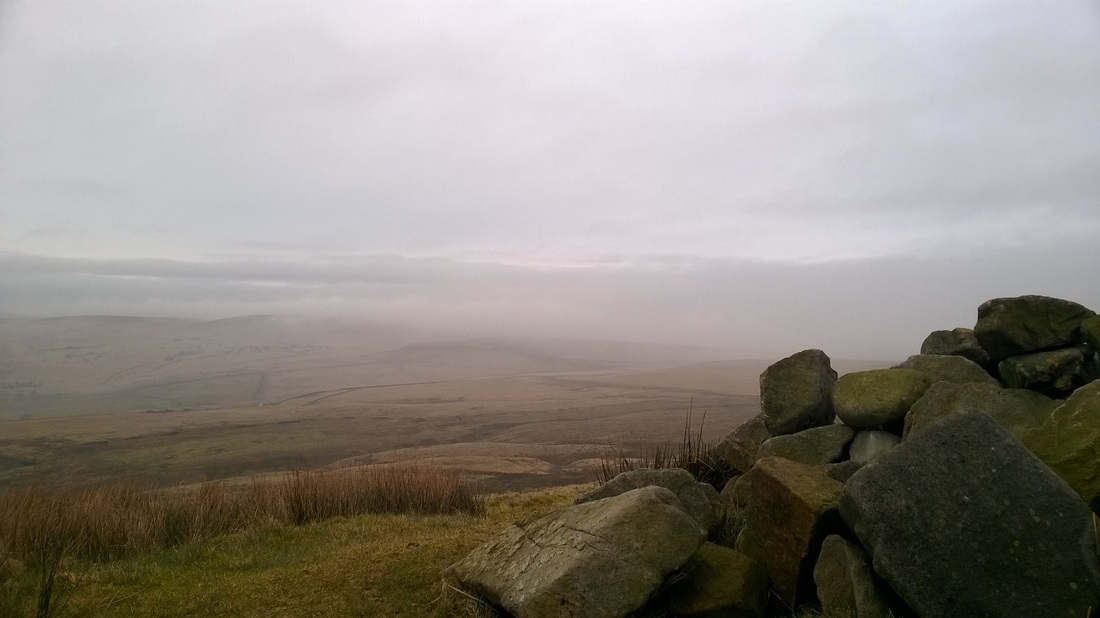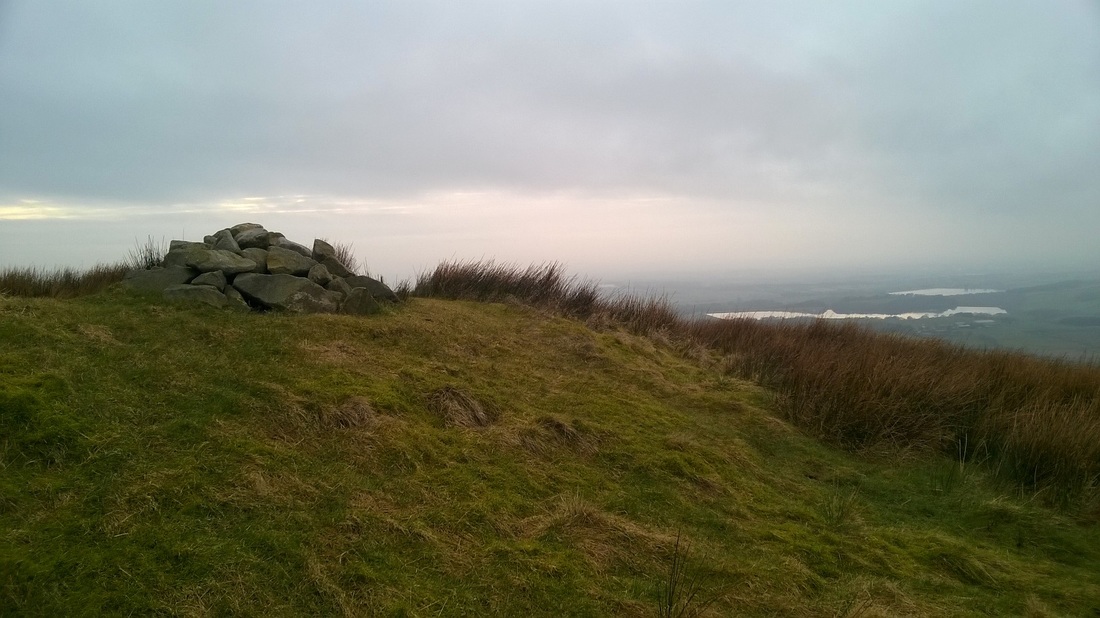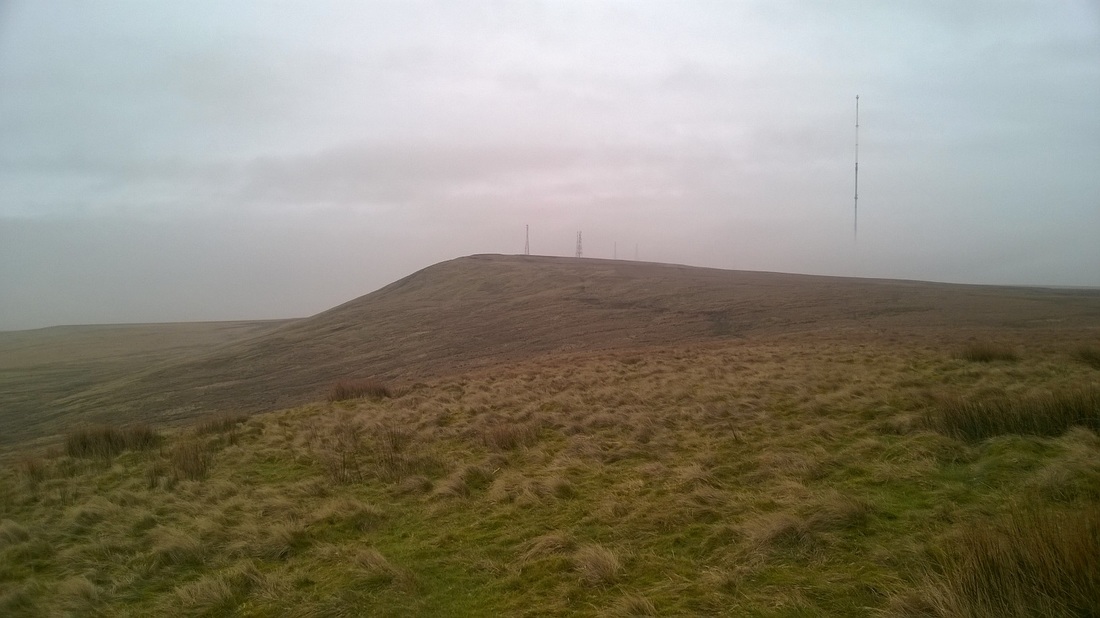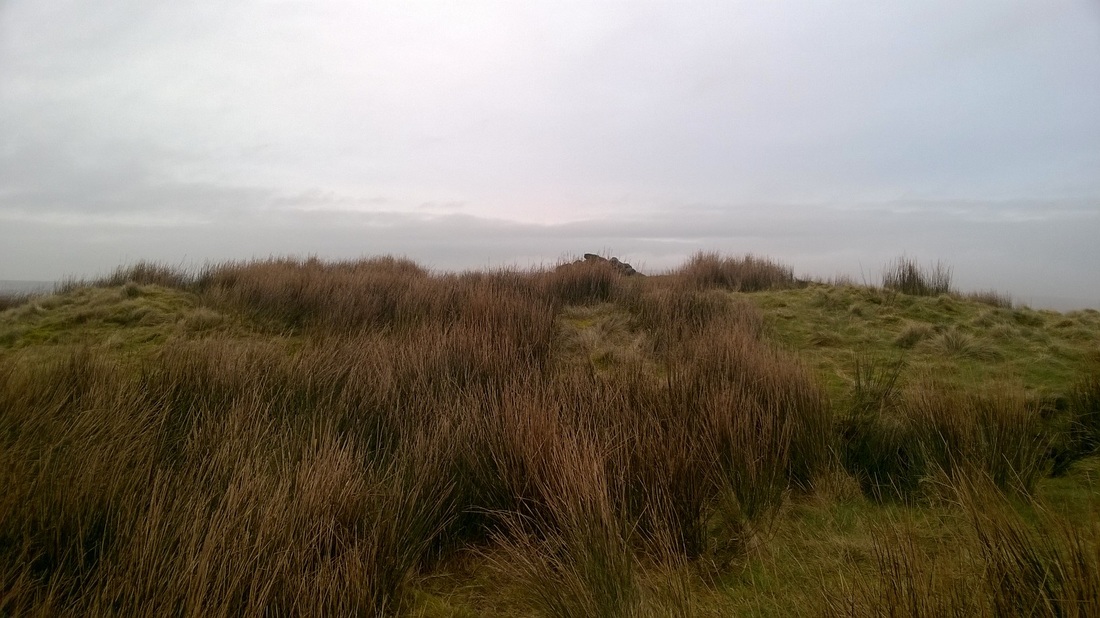The hill is 380m high and forms part of the West Pennine Moors.
On top of the hill is a bronze age burial mound which is marked by the stones in the picture. It is one of two similar burial mounds in the area, the other being approximately a mile to the East.
The mound has been dated to 1100BC and has been excavated on two occasions (1958 and 1963/4). It is located on the North edge of the summit and includes a slightly oval mound of earth and stones 1.3m high and measures 21m North-South and 19m East-West.
On the monument's southern edge there are three partially exposed gritstone boulders which form part of the cairn's kerb which once ran around the perimeter of the mound. The excavation of the cairn located the primary burial at the monument's centre. This comprised three cremations interpreted as an adult male, adult female, and a child, located beneath a collapsed enlarged food vessel and inserted into a central stone cist.
Three or four secondary cremations and a number of flint tools including barbed and tanged arrowheads, scrapers and a knife were also found during these excavations.
Round cairns are prehistoric monuments and span the period BC700 to BC2000, they were constructed as stone covered mounds covering single or multiple burials, these burials are commonly found within the mound in stone lined compartments called cists. In some cases they were surrounded by a ditch and like the one at Noon Hill they are often found in prominent locations.




 RSS Feed
RSS Feed
